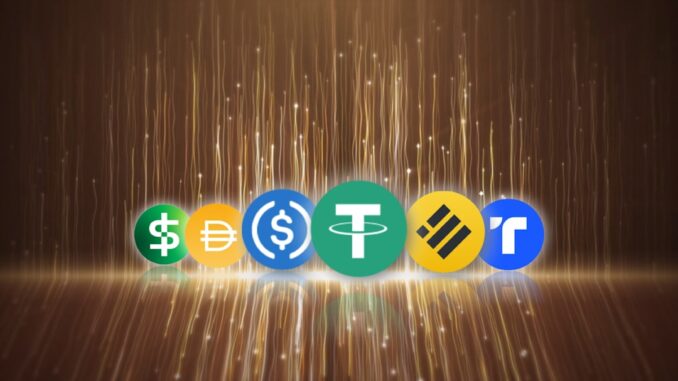
The United States Senate achieved a historic milestone on June 17, 2025, decisively passing the Guiding and Establishing National Innovation for U.S. Stablecoins, or GENIUS Act, by a 68-30 bipartisan vote. [4, 5, 7, 14] This seminal legislation marks the first time either chamber of Congress has approved a comprehensive regulatory framework specifically for payment stablecoins. [5] The vote culminates months of intense negotiations and bipartisan collaboration, pushing the nation closer to a defined and robust digital asset regulatory environment. [6, 9]
A New Regulatory Foundation
Congress designed the GENIUS Act to address the burgeoning $250 billion stablecoin market, which facilitates faster transactions and provides crucial liquidity in the crypto ecosystem. [7, 11, 13, 21] Advocates argued for the necessity of this framework, pointing to prior de-pegging events and the absence of clear oversight that exposed consumers and the financial system to significant risks. [13, 17] The bill clearly defines ‘payment stablecoin’ as a digital asset for payment or settlement, which an issuer must redeem for a fixed monetary value. [2, 11]
Investor Identification, Introduction, and negotiation.
Crucially, the GENIUS Act explicitly classifies qualifying payment stablecoins as neither securities nor commodities, aiming to provide clarity and prevent jurisdictional disputes among federal agencies. [2, 3, 10] This definitive classification establishes a distinct regulatory path for these assets, moving them out of the ambiguous ‘wild west’ status they long occupied. [10, 15] The legislation mandates that only specifically authorized entities can issue stablecoins. [10, 14] These ‘permitted payment stablecoin issuers’ must be subsidiaries of insured depository institutions, federally qualified nonbank payment stablecoin issuers approved by the Comptroller of the Currency (OCC), or state-qualified issuers operating under federal standards. [5, 11, 14] This structure aims to integrate stablecoin issuance more closely with regulated financial entities, fostering greater trust and stability. [11, 12]
At the heart of the GENIUS Act lies its stringent reserve requirements. Issuers must maintain reserves equivalent to 100% of their outstanding stablecoins, backing them with highly liquid assets such as cash, Treasury instruments, or Federal Reserve balances. [3, 4, 8, 10, 11, 14] These reserves must remain segregated from the issuer’s operational funds, and issuers must conduct and publish monthly audits to certify the sufficiency and composition of their holdings, ensuring transparency. [4, 8, 10, 11, 14] The bill also guarantees stablecoin holders priority over all other claims against the issuer in bankruptcy, strengthening consumer protections significantly. [3, 7] Furthermore, the act prohibits issuers from paying interest or yield to individuals holding stablecoins, distinguishing them more clearly from bank deposits and preventing potential run risks associated with yield-bearing crypto assets. [1, 14, 16, 20]
Strengthening Oversight and Market Integrity
The GENIUS Act establishes a dual regulatory structure, allowing issuers to choose between federal or certified state oversight. [10, 12] While state regulation remains an option for issuers with less than $10 billion in stablecoins outstanding, federal oversight, primarily by the OCC, governs larger non-bank entities and those opting for a federal charter. [1, 10, 12] The Federal Reserve gains back-up enforcement authority against state-qualified issuers in exigent circumstances, enhancing systemic stability. [1] The U.S. Treasury also assumes significant authority, including full oversight of foreign stablecoins to ensure they meet domestic standards before entering the U.S. market. [8, 10, 12, 14]
Recognizing stablecoins’ potential for illicit finance, the legislation incorporates robust anti-money laundering (AML) and sanctions compliance provisions. [8, 11, 12, 14] Issuers must comply with the Bank Secrecy Act (BSA) and implement comprehensive AML and sanctions compliance programs, with the Financial Crimes Enforcement Network (FinCEN) tasked with developing tailored rules for stablecoin issuers. [8, 12, 14] This addresses concerns from critics who argued that without proper controls, stablecoins could facilitate money laundering and sanctions evasion. [17] The bill further outlines significant penalties, including fines up to $1 million and imprisonment for up to five years, for unauthorized stablecoin issuance. [10]
Implications for Finance and Innovation
Passage of the GENIUS Act is a pivotal moment, poised to bolster the legitimacy of stablecoins, potentially encouraging wider adoption and fostering greater competition and innovation. [8, 11, 16] Proponents argue it positions the U.S. to lead in digital asset innovation, asserting American financial leadership globally and potentially expanding the use of dollar-pegged stablecoins worldwide. [8, 9, 17, 21] Some financial institutions predict the stablecoin market could grow tenfold in the coming years, driven by this newfound regulatory clarity. [20]
For the traditional financial system, the act presents both opportunities and challenges. Banks may find avenues to streamline expensive processes like fund transfers, but also face the need to defend their deposit bases against potential migration to stablecoins held by nonbank issuers. [16, 20] Payment networks could experience increased competition, particularly for cross-border transactions, potentially impacting existing revenue streams. [16] However, the framework could also integrate digital assets more deeply into traditional banking, fostering a secure environment for growth. [13, 16]
While the act received widespread bipartisan support, it did face some opposition. Senator Elizabeth Warren expressed concerns that the bill, despite amendments, might not sufficiently protect national security, financial stability, and consumers, or adequately curb potential corruption. [4, 6, 7] The stringent issuer criteria might also create barriers to entry, potentially favoring large institutions and risking market centralization over fostering smaller fintech innovation. [10, 12, 17]
With Senate passage secured, the GENIUS Act now moves to the House of Representatives. [4, 5, 7, 14] The House must either pass its own companion bill, the STABLE Act, or adopt the Senate’s text. [1, 2, 5] Should differences arise, a conference committee will work to reconcile the two versions before the bill heads to President Donald Trump’s desk for signature. [4, 5, 6, 9, 14] This legislative journey continues, but the Senate’s action signals a clear intent to bring comprehensive and decisive regulation to the rapidly evolving stablecoin market, aiming for a future where digital currencies seamlessly and securely integrate into the broader U.S. financial system. [2, 11, 13]


Be the first to comment